Top Rankings
Pritchett School District No. Re-3 ranks among the top 20% of public school district in Colorado for:
Category
Attribute
Student Attention
Lowest student:teacher ratio (Top 1%)
For the 2025 school year, there are 2 public elementary schools serving 47 students in Pritchett School District No. Re-3.
Public Elementary Schools in Pritchett School District No. Re-3 have a diversity score of 0.08, which is less than the Colorado public elementary school average of 0.62.
Minority enrollment is 4% of the student body (majority Hispanic), which is less than the Colorado public elementary school average of 50% (majority Hispanic).
Overview
This School District
This State (CO)
# Schools
3 Schools
1,473 Schools
# Students
61 Students
601,879 Students
# Teachers
10 Teachers
38,351 Teachers
Student : Teacher Ratio
6:1
6:1
District Rank
Math Test Scores (% Proficient)
(18-19)<50%
35%
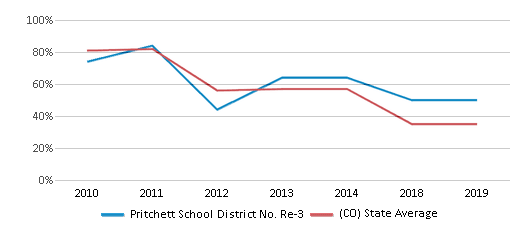
Reading/Language Arts Test Scores (% Proficient)
(18-19)≥50%
47%

Graduation Rate
(19-20)≥50%
81%
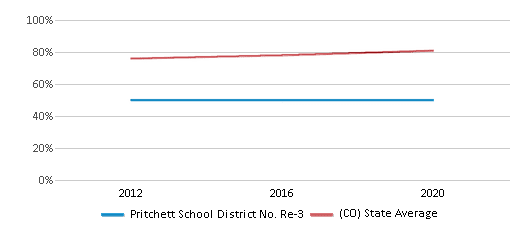
Students by Ethnicity:
Diversity Score
0.15
0.62
# American Indian Students
n/a
3,555 Students
% American Indian Students
n/a
1%
# Asian Students
n/a
20,679 Students
% Asian Students
n/a
3%
# Hispanic Students
5 Students
213,411 Students
% Hispanic Students
8%
35%
# Black Students
n/a
27,900 Students
% Black Students
n/a
5%
# White Students
56 Students
300,798 Students
% White Students
92%
50%
# Hawaiian Students
n/a
2,111 Students
% Hawaiian Students
n/a
n/a
# Two or more races Students
n/a
33,263 Students
% of Two or more races Students
n/a
6%
Students by Grade:
# Students in PK Grade:
11
25,359
# Students in K Grade:
7
57,183
# Students in 1st Grade:
6
59,805
# Students in 2nd Grade:
5
62,964
# Students in 3rd Grade:
5
60,979
# Students in 4th Grade:
4
62,174
# Students in 5th Grade:
2
62,162
# Students in 6th Grade:
4
62,153
# Students in 7th Grade:
1
58,727
# Students in 8th Grade:
2
59,502
# Students in 9th Grade:
4
7,556
# Students in 10th Grade:
1
7,626
# Students in 11th Grade:
5
7,365
# Students in 12th Grade:
4
8,324
# Ungraded Students:
-
-
District Revenue and Spending
The revenue/student of $52,328 is higher than the state median of $15,473. The school district revenue/student has stayed relatively flat over four school years.
The school district's spending/student of $52,984 is higher than the state median of $15,791. The school district spending/student has stayed relatively flat over four school years.
Total Revenue
$3 MM
$13,426 MM
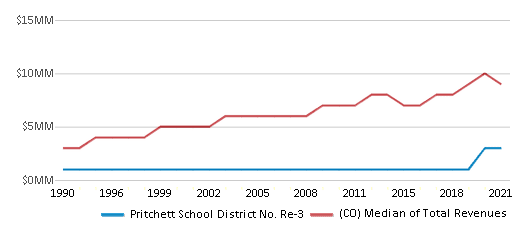
Spending
$3 MM
$13,702 MM
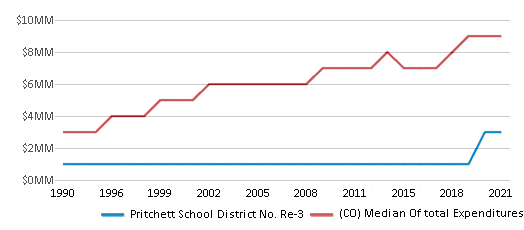
Revenue / Student
$52,328
$15,473
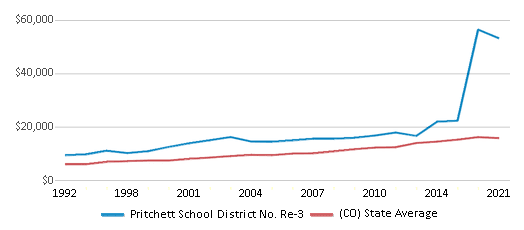
Spending / Student
$52,984
$15,791
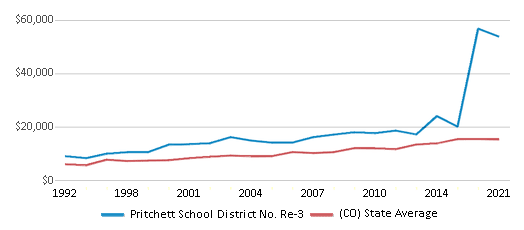
Best Pritchett School District No. Re-3 Public Elementary Schools (2025)
School
(Math and Reading Proficiency)
(Math and Reading Proficiency)
Location
Grades
Students
Rank: #11.
Pritchett Middle School
(Math: <50% | Reading: <50% )
Rank:
Rank:
8/
Top 30%10
533 Irving Street
Pritchett, CO 81064
(719) 523-4045
Pritchett, CO 81064
(719) 523-4045
Grades: 6-8
| 7 students
Rank: #22.
Pritchett Elementary School
(Math: ≥50% | Reading: ≥50% )
Rank:
Rank:
3/
Bottom 50%10
533 Irving Street
Pritchett, CO 81064
(719) 523-4045
Pritchett, CO 81064
(719) 523-4045
Grades: PK-5
| 40 students
Recent Articles

Year-Round Or Traditional Schedule?
Which is more appropriate for your child? A year-round attendance schedule or traditional schedule? We look at the pros and cons.

Why You Should Encourage Your Child to Join a Sports Team
Participating in team sports has a great many benefits for children, there is no doubt. In this article you will learn what those benefits are.

White Students are Now the Minority in U.S. Public Schools
Increasing birth rates among immigrant families from Asia and Central and South America, combined with lower birth rates among white families, means that for the first time in history, public school students in the United States are majority-minority. This shift in demographics poses difficulties for schools as they work to accommodate children of varying language abilities and socio-economic backgrounds.





